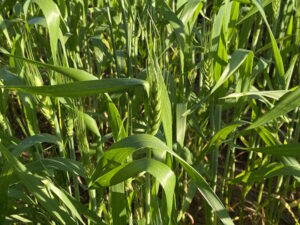405. Risk in Australian grain farming
Earlier in my career, I did a lot of work on risk in Australian agriculture, particularly for grain and sheep farms. Now I’m part of a project called RiskWi$e, funded by the Grains Research and Development Corporation (GRDC). The project aims to improve risk management by Australian producers of our main grain crops.
Risk is a pervasive issue in agriculture, arising from many sources and affecting every farm-related decision farmers make. It can be quite complex, and I enjoy the challenge of grappling with those complexities and trying to make them clear to myself and others.
This will be the first in a series of Pannell Discussions about risk in agriculture, with a focus on risks that affect the performance of the farm business. I’ll start this time by outlining the types of risk that farm business managers face.
I like the breakdown of risk types used by the US Department of Agriculture’s Economic Research Service. It includes the following five types of risk.
Production risk
Production of grain and other outputs fluctuates over time, so when production decisions are being made, farmers can’t be sure of what their yields will be. Reasons include variations in rainfall, temperature, hail, pests, diseases, weeds, and natural hazards like fire and flood. These risks can affect both the quantity and quality of production.
Irrigation reduces one of those sources of risk (the risk of deficient rainfall), but very little of Australia’s grain crop area is irrigated.
In some places, insurance is available to compensate farmers if their crops fail, but these usually require substantial government subsidies to be economically viable, and such subsidies are not available in Australia.
Price risk or market risk
The prices farmers receive for their outputs, and the prices they must pay for their inputs, vary over time. Until recently, input-price risk was rarely significant, but it has become much more prominent. For example, the dramatic rise in cost of nitrogen fertiliser starting in 2021 was a major concern for farmers. It was caused by a combination of rising energy prices, decisions by some fertiliser-producing countries to constrain exports, and Russia’s invasion of Ukraine.
 The main cause of variation in output prices is variation in global production. High-production years, caused by favourable growing conditions in key areas, result in prices being pushed down, and vice versa. Other factors that contribute to price fluctuations include: changes in policy that affect prices, changes in input prices, crises such as wars or major famines, and changes in the supply chain between farmers and consumers.
The main cause of variation in output prices is variation in global production. High-production years, caused by favourable growing conditions in key areas, result in prices being pushed down, and vice versa. Other factors that contribute to price fluctuations include: changes in policy that affect prices, changes in input prices, crises such as wars or major famines, and changes in the supply chain between farmers and consumers.
Policy decisions that amplify market risk include decisions to divert food crops to bio-energy production, to retain food for domestic consumption at times of perceived shortages, to impose trade restrictions like tariffs on imports and import quotas (or less often export quotas), and to unexpectedly apply new rules on imports, often with the aim of punishing the exporting country over some dispute that has nothing to do with agriculture.
Improvements in production technologies put downward pressure on output prices in the long run, but rarely cause noticeable short-term price changes.
There are several mechanisms to reduce price risk, including forward contracts and futures contracts, though they have their down sides too.
Financial risk
Interest rates vary over time, causing required debt repayments to fluctuate. Other sources of financial risk include changes in credit availability and credit conditions. The greater the farmer’s debt, the greater the financial risk faced.
Institutional risk
This is about changes in policies and regulations within the farmer’s own country. (I noted that policy changes – domestic or in other countries – can feed into price risk.) Institutional risks could include the imposition of new environmental restrictions, restrictions on entry of young tourists who provide farm labour at critical times, or restrictions on certain production technologies (e.g., pesticides, GM crops).
Human or personal risk
This could include accidents, illness, death, divorce, acrimony between partners in the farm business, or problems with succession.
Most research on risk at the farm level focuses on the first two risk categories – production risk and price risk – but the other categories can also cause serious problems (Komarek et al., 2020). I expect the cause for this imbalance of research effort is that fluctuations in production and prices are ever-present and obvious, while the others are more occasional and perhaps harder to anticipate.
In future posts, I’ll look at agricultural risks from various angles.
Further reading
Komarek, A.M., De Pinto, A. and Smith, V.H. (2020). A review of types of risks in agriculture: What we know and what we need to know, Agricultural Systems 178, 102738. Journal web page
This is #1 in my RiskWi$e series. Read about RiskWi$e here or here.
The RiskWi$e series:
405. Risk in Australian grain farming (this post)
406. Risk means probability distributions
408. Farmers’ risk perceptions
409. Farmers’ risk preferences
410. Strategic decisions, tactical decisions and risk
412. Risk aversion and fertiliser decisions
413. Diversification to reduce risk
414. Intuitive versus analytical thinking about risk
415. Learning about the riskiness of a new farming practice
416. Neglecting the risks of a project
418. Hedging to reduce crop price risk
419. Risk premium
420. Systematic decision making under risk
421. Risk versus uncertainty
422. Risky farm decision making as a social process
423. Risk aversion versus loss aversion, part 1
424. Risk aversion versus loss aversion, part 2
433. Depicting risk in graphs for farmers
